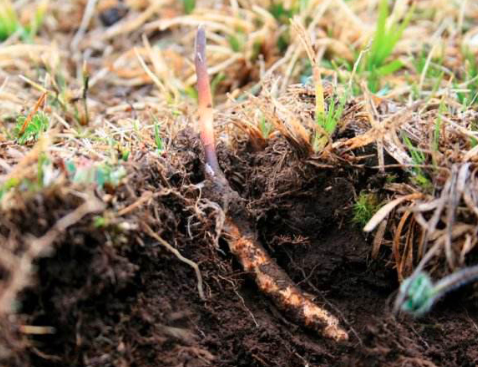The growth of wild Cordyceps sinensis is mainly divided into four stages
The time it takes for wild Cordyceps to grow is usually affected by a variety of factors such as climate, environment, and host, so its growth cycle can vary. Generally speaking, the growth cycle of wild Cordyceps is more uncertain and unstable than that of cultivated Cordyceps. The growth of cordyceps can be mainly divided into the following stages:
The growth of cordyceps can be mainly divided into the following stages:
1. Incubation period of fruiting body: The spores of cordyceps are incubated under suitable environmental conditions to form bacterial filaments.
2. Mycelial growth period: After hatching, the hyphae of cordyceps begin to grow in the soil and parasitize the host insects, parasitizing within the host body.
 3. Transient dormancy period: After the mycelium grows to a certain extent, it enters a brief dormancy period, during which there is no significant change in the external environment of the cordyceps and the host.
3. Transient dormancy period: After the mycelium grows to a certain extent, it enters a brief dormancy period, during which there is no significant change in the external environment of the cordyceps and the host.
4. Subbody formation period: After the dormancy period ends, cordyceps begins to form sub bodies, which are commonly referred to as cordyceps heads. This process takes a considerable amount of time, typically ranging from several months to a year.
Therefore, considering the stages of hatching, hyphal growth, dormancy, and fruiting body formation of cordyceps, the complete growth cycle generally takes about 3 to 5 years. The length of this cycle is also influenced by various factors such as environmental factors and cultivation techniques.
The growth cycle of most wild cordyceps requires 3 to 5 years or longer, including the time spent parasitizing in insect hosts and the process of forming fruiting bodies. Due to the instability of the wild environment, the natural growth cycle of cordyceps is generally longer than that of artificially cultivated cordyceps, and the yield is relatively lower.
Additionally, it should be noted that Cordyceps sinensis is a nationally protected animal at the first level. Wild Cordyceps sinensis is a species prohibited from harvesting in China, and relevant laws and regulations have also made relevant provisions. Therefore, individuals should not engage in wild Cordyceps sinensis harvesting activities except for legal scientific research.






